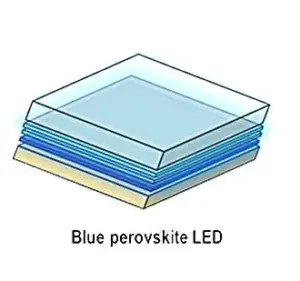Perovskite LEDs (PeLEDs) have shown promise for next-generation displays, but developing efficient blue emitters has proven difficult. In a review published in Light: Science & Applications, researchers analyzed key challenges and laid out a roadmap for optimizing blue perovskites.

Currently red and green PeLEDs significantly outperform blue counterparts. Imperfections, ion migration, and mismatched energy levels hamper blue perovskite performance. The wider bandgap of blue light allows more avenues for defects. Charge mobility issues also impede efficiency.
Researchers found the most progress involves compositional tuning and nanoscale engineering of perovskites. Isolated, quantum-confined nanostructures like 3D nanoparticles or 2D nanoplatelets strengthen radiative recombination. Recent records above 15% efficiency for blue PeLEDs used ultrasmall, monodispersed quantum dot films.
The review concludes continuously shrinking the active emitting regions to crystallite sizes below exciton binding lengths is key. This maximizes spatial confinement for balanced charge injection.
The ideal blue emitter architecture proposed is quasi-2D nanoplatelets synthesized directly on a substrate. Carefully designed ligands, mild growth conditions, and substrate pretreatments could enable precise thickness and morphology control. A lateral multi-quantum-well structure within nanoplatelets may further optimize efficiency.
An integrated device stack with the nanoplatelet layer sandwiched by charge injection layers can also enhance performance. Progress will require co-optimizing the perovskite composition and growth process alongside the device architecture.
Realizing efficient and stable blue PeLEDs will remove a major roadblock for perovskite displays spanning the visible spectrum. Though challenges remain, researchers have outlined pathways via nanoscale engineering for unlocking high-performing blue emitters.
Reference
Yang, X., Ma, L., Yu, M. et al. Focus on perovskite emitters in blue light-emitting diodes. Light Sci Appl 12, 177 (2023). https://doi.org/10.1038/s41377-023-01206-2

